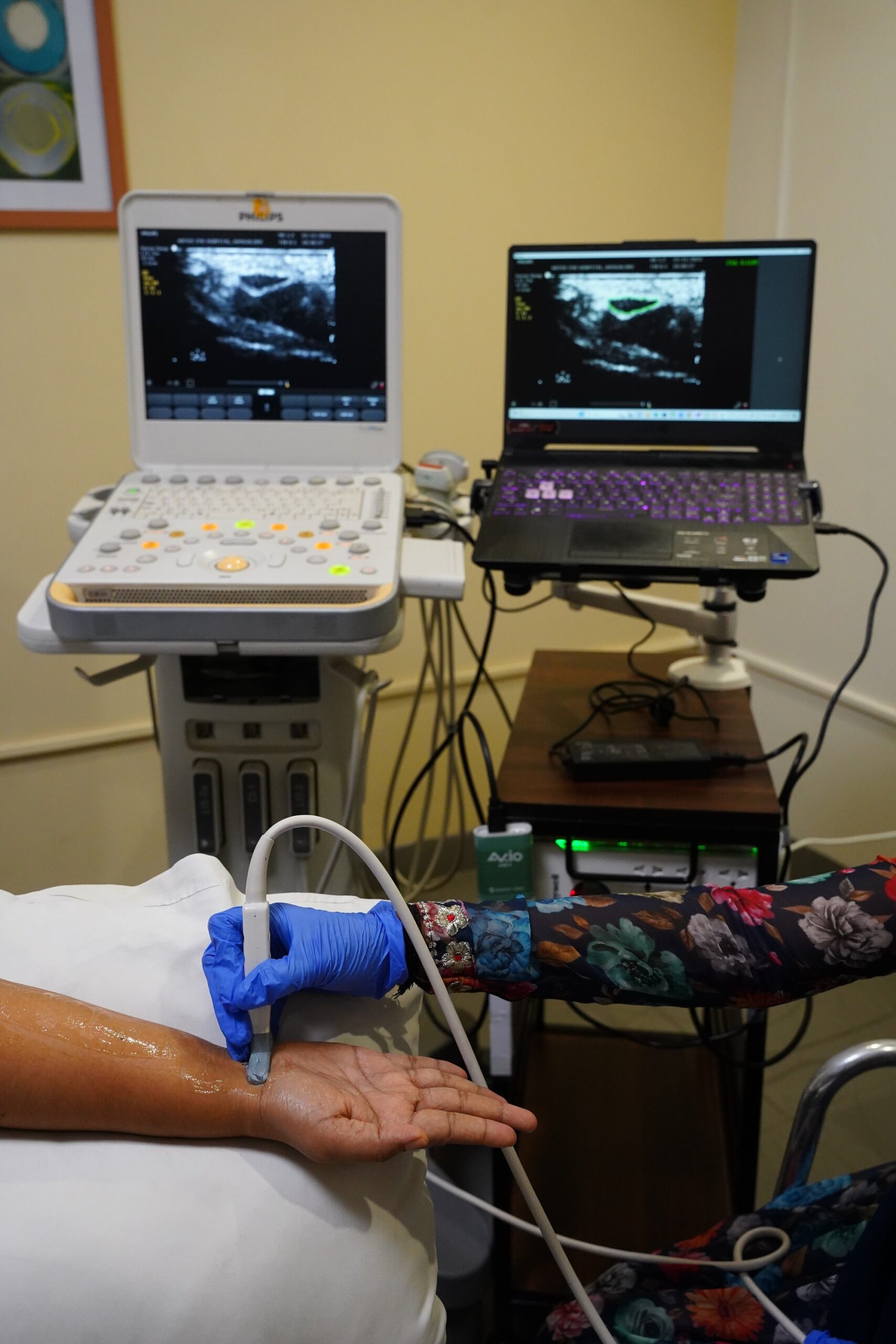Carpal tunnel syndrome can now be detected using this AI tool developed by IISc in collaboration with doctors at Aster-CMI Hospital.

New AI tool to diagnose carpal tunnel syndrome. (Supplied)
In a groundbreaking medical achievement, researchers from the Indian Institute of Science (IISc) Bengaluru, in collaboration with Aster-CMI Hospital, have unveiled a cutting-edge AI tool poised to revolutionise the diagnosis of Carpal Tunnel Syndrome (CTS), a condition increasingly associated with the ubiquitous use of mobile phones.
Published in IEEE Transactions on Ultrasonics, Ferroelectrics, and Frequency Control, the study delves into the innovative approach that could reshape how we understand and address CTS.
Traditionally linked to repetitive manual tasks, carpal tunnel syndrome involves the compression of the median nerve as it traverses the wrist.
According to the IISc release, “CTS results in numbness, tingling or pain in the wrist area. It is one of the most common nerve-related disorders, specifically affecting individuals who perform repetitive hand movements, such as office staff who work with keyboards, assembly line workers, and sportspersons.”
Interestingly, the prolonged use of smartphones, marked by repetitive typing and scrolling, has emerged as a potential contributor to CTS, leading to discomfort and pain in the hand and arm.
Enter the AI tool, a marvel in medical imaging that utilises a Machine Learning model based on a transformer architecture akin to the one powering ChatGPT. Originally designed for detecting objects in YouTube videos, this technology has been ingeniously repurposed to identify the median nerve in ultrasound videos — an arduous task due to the subtle physical cues and complex nature of ultrasound imagery.
Researchers @cdsiisc and Aster CMI Hospital have developed an #AI tool that can screen ultrasound videos to track the median nerve, and help doctors diagnose carpal tunnel syndrome.https://t.co/HcHqGBm1sX#IIScresearch pic.twitter.com/IgNuKbbxYm
— IISc Bangalore (@iiscbangalore) December 22, 2023
Led by Karan R Gujarati, a former MTech student at the Department of Computational and Data Sciences at IISc, the research team faced the challenge of interpreting ultrasound images, which are less clear compared to X-rays or MRI scans.
The team collaborated with Lokesh Bathala, Lead Consultant Neurologist at Aster-CMI Hospital, to compile and annotate a comprehensive dataset of ultrasound videos from both healthy individuals and patients with CTS. This dataset played a pivotal role in training the AI model to discern the median nerve with remarkable accuracy.
A standout feature of this tool is its real-time functionality, allowing it to instantly measure the cross-sectional area of the median nerve — a critical factor in diagnosing CTS. Unlike traditional manual measurements performed by sonographers, the AI tool automates the process, significantly boosting both speed and precision.
“In tests, it has shown to report the nerve’s cross-sectional area with over 95 percent accuracy, particularly in the wrist region where CTS symptoms are most prevalent,” said the researchers.
The tool is expected to help several people with CTS symptoms as it offers a quick and accurate results and can be used in a variety of clinical settings.
The tool has already undergone a pilot trial at Aster-CMI Hospital, where it works in conjunction with traditional ultrasound machines, offering doctors an enhanced view and analysis of the median nerve.
The IISc release outlines the team’s future aspirations, expressing eagerness to partner with ultrasound machine manufacturers to integrate this technology into their devices, thereby making it widely accessible to healthcare providers.
Additionally, they envision expanding the tool’s capabilities to detect other nerve-related issues stemming from modern lifestyle habits, such as prolonged use of mobile devices.

May 06, 2024

May 06, 2024

May 06, 2024

May 04, 2024

May 04, 2024

May 03, 2024